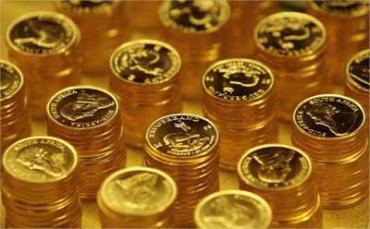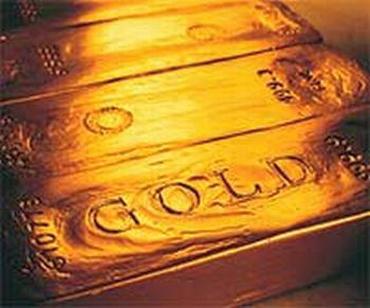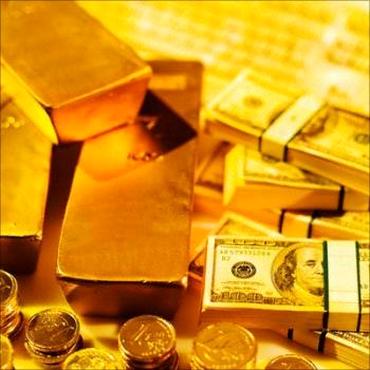
Whenever an economy is in trouble investors start selling a weak asset and start buying an asset that appears strong. This investor behaviour is currently best reflected in the European Union where investors are selling the continental currency Euro and making a beeline to buy gold.
Though there is no recent economic problem in India, Indian investors are lapping up gold even as it touches new high every day. But then there are various reasons for which you should own gold in your portfolio.
The most important of these is that gold is a real asset whose value is driven by factors (such as the amount of gold mined) that are very different from those that impact the value of financial assets like stocks or bonds. Therefore, it brings in a much needed element of diversification in your portfolio.
Form of gold
The next question that is often asked is in which form should one hold gold? The one form which we all are familiar with of course is jewellery. However, from an investment perspective this is not the best option as the making charges for jewellery can be as high as 30 per cent of the value of the gold. That is, if your jewellery has gold worth Rs 100, you are probably going to be buying it for Rs 130.
So if you wish to sell your jewellery, all you will get is the value of the gold; the making charges will be a loss to you. Not to mention that sometimes jewellery that is promised to be made of 22K (carat) gold turns out to be of a poorer quality.
The best form to hold gold, from an investment perspective, is probably, gold bars (or like they say 'biscuits'!). Gold bars are standardised products whose purity is assured by the hallmark (seal of the producer) that it carries. There are no making charges involved and as the purity and quantity is assured, on liquidation you do not have any surprises in store for you.
Making your investments work harder and smarter

During the 1950s, gold appreciated only marginally; from Rs 99 per 10 grams in 1950 to Rs 111 per grams in 1960. During the next decade, from 1960-70, it moved up to Rs 184.
Between 1970 and 1980 came the massive rise from Rs 184 to Rs 1,330.
During the 1980s, it moved up another 240 per cent. The trend of gold prices in India in the last few years is given in the table below which reveals that between 1950 and 2010 gold appreciated 180-fold, an annual compound rate of return of 11.46 per cent.
How to buy gold
Gold deposit scheme
Introduced in 1999, this scheme is managed by SBI. Individuals, HUFs (Hindu Undivided Families), trusts and companies can deposit a minimum of 200 gram of gold with no upper limit, in exchange for gold bonds carrying a tax-free interest of 3 to 4 per cent depending upon the tenure of the bond ranging from 3 to 7 years.
Furthermore, these bonds are free from wealth tax and capital gains tax. The principal can be collected back in gold or cash at the investor's option
Gold prices in India
| As on March 31 | Gold price per 10 grams in Rs |
| 1925 | 18 |
| 1930 | 18 |
| 1935 | 30 |
| 1940 | 36 |
| 1945 | 62 |
| 1950 | 99 |
| 1955 | 79 |
| 1960 | 111 |
| 1965 | 71 |
| 1970 | 184 |
| 1975 | 540 |
| 1980 | 1,330 |
| 1985 | 2,130 |
| 1990 | 3,200 |
| 1995 | 4,658 |
| 1996 | 5,713 |
| 1997 | 4,750 |
| 1998 | 4,050 |
| 1999 | 4,220 |
| 2000 | 4,395 |
| 2001 | 4,410 |
| 2002 | 5,030 |
| 2003 | 5,260 |
| 2004 | 6,005 |
| 2005 | 6,165 |
| 2006 | 8,210 |
| 2007 | 9,500 |
| 2008 | 11,000 |
| 2009 | 15,000 |
| 2010 | 16,500 |

In recent months, banks have become very aggressive in marketing gold bars.
This pick up in tempo is not only due to the festive season; it is also due to the fact that banks have hit upon a new idea to make a 'neat buck' off you.
We will let the numbers speak for themselves.
On the 8th of November, 2006 (the practice remains the same even in 2010 but it may vary from banks to bank and from one jeweller to another) we called one private sector bank and one jeweller making an enquiry to purchase gold.
This is what we got as a response:
Expensive, for sure
| Standard | Banks(Private) | Branded retailer | Jeweller |
| Purity | 0.999 | 0.999 | 0.999 |
| Price per kilo* (Rs) | 1,071,520 | 1,025,000 | 940,000 |
| Per cent discount to private bank rate | NM | 4.5 per cent | 14 per cent |
* Prices as on 8th of November 2006; Including VAT; NM: Not Meaningful
Do not make a judgment as yet. The banks, as their relationship manager will definitely pitch (only if you ask though), give you a certificate assuring you of the purity of the gold. And that's why they charge a premium for the gold. So, on the one hand you get pure gold with a 'certificate' and on the other you get just pure gold.
To be able to make a rational decision, let's ascertain the value of the certificate, that is, what benefit it offers you. In case of standard gold bought for the purpose of investment, the benefit which one looks for is whether the seller will buy the gold back or not and, if yes, at what price will he buy it back?
Banks lose out
| Goldbar | Bank(Private) | Brandedretailer | Jeweller |
| Buy back facility | No | Yes | Yes |
| Discount on buy back | NA | NIL | NIL |

The bank, which pushed you into buying standard gold at a premium, will not buy the gold back from you! So, if you bought gold from a bank today for Rs 100, and you needed to sell it the same day (to a jeweller as the bank will not buy the gold back from you), all your will realise is Rs 86! Of course, you get to keep the certificate!
The jeweller on the other hand, will buy back gold from you any day at the prevailing price. Some jewellers also give you a certificate for the gold you buy, thus diluting a key selling point of the bank.
The answer to the question of where you should buy gold from is simple give the banks a skip in case you are looking at buying gold. Opt instead for a credible jeweller (even in the case of jewellers, we found that there is a lot of price variation with branded stores charging a premium do your homework well before you buy gold). And, of course always buy standard hallmarked gold.
If you do decide to go to a jeweller to buy gold in bulk, do negotiate. It is likely you will get a discount. In our conversations with a couple of brokers, we were offered a discount on bulk purchases.

The modern international method of investing in gold is via gold mutual funds. The Securities and Exchange Board of India has allowed mutual funds to introduce gold exchange traded funds (Gold ETFs) with gold as the underlying asset.
In Gold ETFs, the underlying asset is exclusively gold bullion, and not a basket of stocks as is the case of equity ETFs. Gold ETFs are shares or units of gold that are owned by investors and are fully backed by gold bullion bars held by a custodian.
Like other ETFs, they are traded on a stock exchange.
Gold ETFs allow investors to buy gold in small increments. In the global market, one unit represents one-tenth of an ounce fine gold (1 Oz = 28.35 grams). If an investor in the fund holds 100 units, the fund must have physical gold worth 10 Ozs.
The value of the unit will move in accordance with the price of gold. Just like mutual funds, the value per unit will be the total value of the gold held, divided by the number of units, minus the expenses of the fund. Gold ETFs, like any share, can be traded and bought by the investors through their stockbrokers.
They can be used for speculating in the short-term for betting on the price of gold, or it can be used for long-term investing. Just like the ETFs, Gold ETFs can be open-ended funds or closed ended funds. However there are some hidden charges like some funds need an underlying demat account or entry loads causing an additional expense, thus giving gold biscuits an edge hence Presha Invesntments recommends biscuits for long term and ETF strictly for short term.
Tax implications
Since there is no income as such from holding gold, there is no liability of income tax. But bullion and jewellery are subject to capital gains tax and wealth tax, without any exemptions whatsoever.
While determining the value of gold ornaments for the purpose of wealth tax, making charges should be ignored, unless the ornaments are studded with precious stones. The value of gold contained in the ornaments can be reduced by 15 to 20 per cent because the dealer invariably deducts 15 per cent of the ruling rate of standard gold when ornaments are sold in the open market.
In a nutshell: